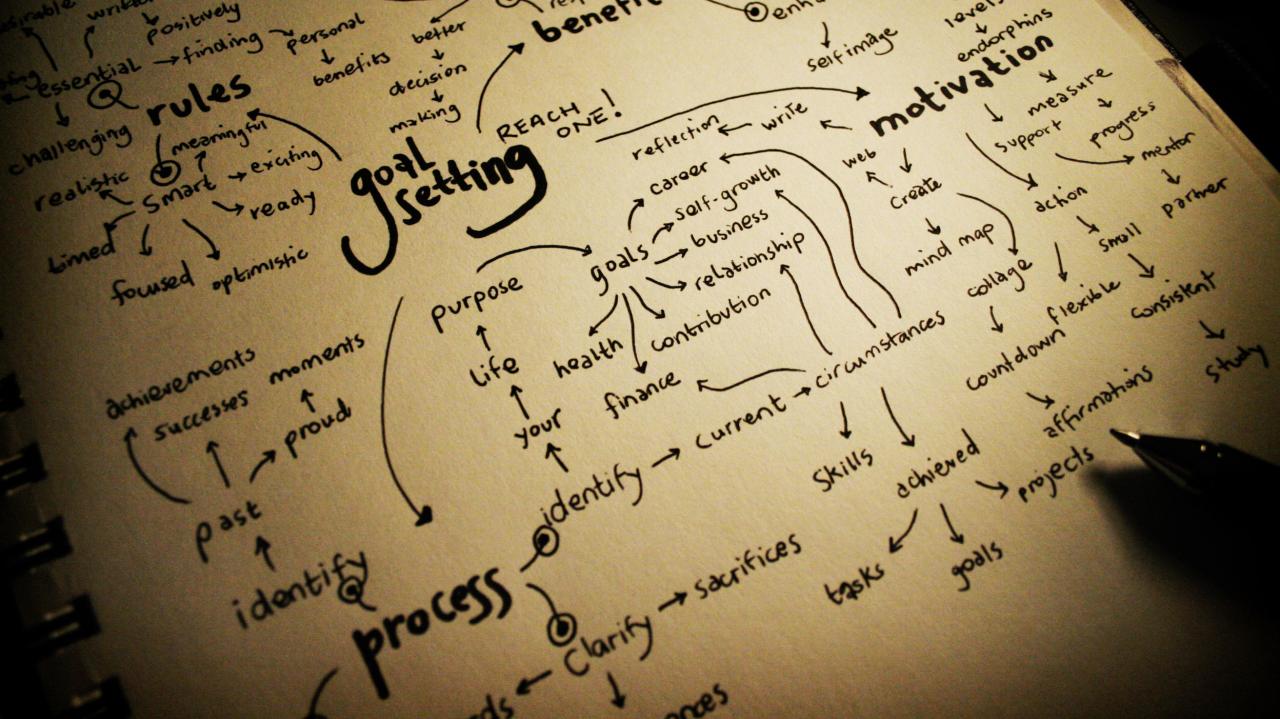I’m writing this on the 22nd of January, recognizing that most of us have already failed to uphold our New Year resolutions. My husband hates New Year resolutions. I and most everyone else on the planet love them. Something about a new year makes me want to take stock and start fresh. I love the optimistic high I get from starting out. Hopefully, it wasn’t just the champagne talking.
My kids like New Year resolutions too, but how do we help our tweens and teens when they have an important resolution or goal? We want to see them succeed on their own because for each win they rack up, their confidence will improve. Author Charles Duhigg in his book The Power of Habit: Why We Do What We Do in Life and Business says, reaching even small goals can propel us toward bigger, more significant accomplishments in our life.
Attaining goals you set for yourself is an essential executive function skill. It oozes stick-with-it-ness and grit that is highly praised. Knowing you can set a goal and attain it builds confidence and shows that we have more control over our own lives than we assume when we are young. These are all great experiences for our girls.
However, the reason my husband hates New Year Resolutions is that 80% of these resolutions peter out around February.
Here’s the thing: Intentions are never enough. Even completing a goal-setting session will not work if you don’t do it right.
Further complicating things is that although many resolutions require establishing habits, not all goals are that simple. Deciding to drink more water daily involves a different process than if you resolve to improve your grades or get into a specific college.
Two things both small habits and larger goals have in common is, to increase their success rate, they must contain specificity and consistency.
Setting specific goals increases our motivation. For instance, to riff off a common resolution; if you say, “my goal this year is to lose weight,” you will surely be in the 80% club by February. The same is true if your goal is to “start my new business.” These statements are so vague they leave a person wondering where on earth to start.
Habits, by nature, are already specific. However, For a particular habit to form, the experts say you also need consistency. You will also need consistency for goals larger than habits, but we’ll get to that in a minute.
Research says you need to stick with a habit for 21 days, on average, for automaticity to occur. Of course, this changes depending on how hard the habit is. Sometimes just getting a daily reminder via a ‘Drink Water’ app is all we need. However, I suspect it would take more than a reminder (maybe a cattle prod?) to establish '50 sit-ups after morning coffee’ as an automatic activity.
Was your New Year resolution a habit? Did you already give up after the first 21 days? Don’t worry. Start again today on the 22nd!
What if you want to accomplish something bigger than a habit?
Specificity and consistency are still key, but they will look different. Big projects or goals are usually vague in construction. For this to not feel like overwhelm, which will cause us to quit before we get started, researchers say we need a specific roadmap or process.
In one study, researchers were curious if struggling students would improve their academics if they enrolled in an intensive, online, written, goal setting program. The program led the students through a series of exercises, setting specific goals and defining detailed strategies for achieving those goals. Within four months, the students who successfully completed the specific and consistent intervention program made significant improvements in their grades.
Deborah Reber, the author of, Doable: The Girls' Guide to Accomplishing Just About Anything, lays out a fantastic step-by-step plan that achieves the specificity and consistency we need for tackling the hairier projects in our lives.
You don’t have to be a girl for these steps to work. However, her book’s style targets girls and her examples draw from popular goals a middle or high schooler would be interested in achieving. If your daughter is motivated to embark on a big goal, recommend she picks up this upbeat read.
Here is Reber’s advice from Doable. You can click here to go to Reber’s website and download free workbooks and worksheets to keep you on track! (I am not being compensated for this recommendation - It's just good stuff!)
8 STEPS TO MAKING ANYTHING DOABLE
Step 1: Define Your To Do: Get crystal clear on exactly what you want to do and why you want to do it.
To determine if a To Do falls into the too-vague category, ask yourself these three simple questions: 1. Can the goal or the result of the goal be measured or tracked? 2. Are there clear steps I can take to reach my goal or accomplish my To Do? 3. Will I know when I’ve reached the goal or completed the task? If you answered no to any of these questions, your To Do isn’t specific enough yet to pass the Doable test.
Step 2: Detail the Little Tasks: Break your goal down into the smallest possible parts.
Research suggests that, unless your goal is short-term or only a few steps, you should plan in reverse for greatest success. For instance, if you need to prepare for a final exam, start with the day of the final and brainstorm (backward) all the steps you'll need to take, ending with today.
Don’t forget to identify anyone else who needs to be involved and be realistic. If you don’t factor these in, you have a good chance of getting unmotivated by disinterested third parties or by too ambitious a plan.
Step 3: Defend Against Obstacles: Recognize the obstacles that often get in your way and plan for them ahead of time.
Are you a procrastinator? Get distracted easily? Or are you someone who undercuts yourself with a lack of confidence or what Reber calls ‘crappy thinking?’ We all have our Achilles heel. Step 3 forces you to take off your optimist glasses. Don't think "This time will be different." Instead, call the roadblock by name.
Step 4: Develop Support Systems: Harness all available resources—tangible, emotional, and otherwise—to support you.
Asking for help is NOT a weakness! You improve your success rate by surrounding yourself with others who want to support you. In fact, research shows that people get happier when they help others. Through fMRI technology, we now know giving activates the same parts of the brain that food and sex activates.
Mentors, Teachers, Friends, Parents/Caregivers, Coaches, Librarians, Tutors, Organizations, and Clubs are all available to you, so please use them!
Just make sure you tell them exactly what you need from them and how they can best help you achieve your goal. It might be emotional or accountability support you desire, or it could be physical like driving or helping design a website. People will be more likely to help you if you are specific because it proves to them you’ve thought things through and their time won’t be wasted.
Step 5: Determine What Success Looks Like: Know exactly what it will feel and look like to have achieved your goal.
Being ‘successful’ means different things to different people. Reber says you need to define what successful completion of your goal means according to you. You don’t want to chase after someone else’s definition of success, and you want everything within your control.
Once you know what success looks like, make sure your end goal can be measured, tracked, and checked off your list. Reber gives the example of “getting into my dream college.” We don’t have full control over this goal. Instead, success needs to be rephrased as “meeting the application criteria for my dream college and submitting a strong application.”
Step 6: Do the Work: Dive in and get down to the business of doing.
“No matter how much brainstorming, planning, scheduling, dreaming, and scheming we make time for, without actually taking action and doing, To Dos are gonna stay on the To Do list,” Reber says.
It’s important to understand your personal style for getting things done. It’s also important to acknowledge how your style contributes to NOT getting things done. Reber identifies 14 ‘Doable Styles’ in her book, such as Deadline Chaser, Reward Junkie, and Short Spurter.
Plan actions that play to your strengths and eliminate strategies you seem to stumble over. Since we need to roll our sleeves up and do the work, build in things like rewards or deadlines to make it more likely you'll follow through.
Step 7: Deal with Setbacks: Expect, embrace, and learn from the failures and setbacks you experience along the way.
It’s inevitable we will fail at some point, and I love that Reber builds this in as a step to achieving goals. Anything worth having is worth risking failure. As author and researcher Brené Brown says, “When failure is not an option we can forget about learning, creativity, and innovation.” Girls, in particular, need experience dealing with failure to take the spooky factor out of it.
It is important to look failure and setback square in the eyes to identify what happened. Don’t ignore your emotions and just push on, but don’t ruminate either. Reber suggests asking yourself the following questions: ■ What went wrong? ■ What is my biggest concern? ■ What can I learn from it? ■ What changes can I make to enhance my chances of success?
Step 8: Deliver the Goods: See your goal pursuit through to completion, and then acknowledge, celebrate, and reflect on the journey.
You may succeed, or you may fail. Chances are if you got to this point, you probably did a course correction at some point. If nothing else, you achieved many small successes along the way. Reber says this is important because, “Each time we achieve something, no matter the size or importance, we gain motivation and inspiration that will help us pursue future goals with even more confidence.”
So celebrate the small wins along with the big ones!
All goals deserve a chance at success, not die before seeing the light of day.
January 22nd is as good a time as any to make a resolution. And although all this plotting and planning may not seem as sexy or shiny as the original goal, I can tell you from experience; there is nothing sexier or shinier than achievement.





